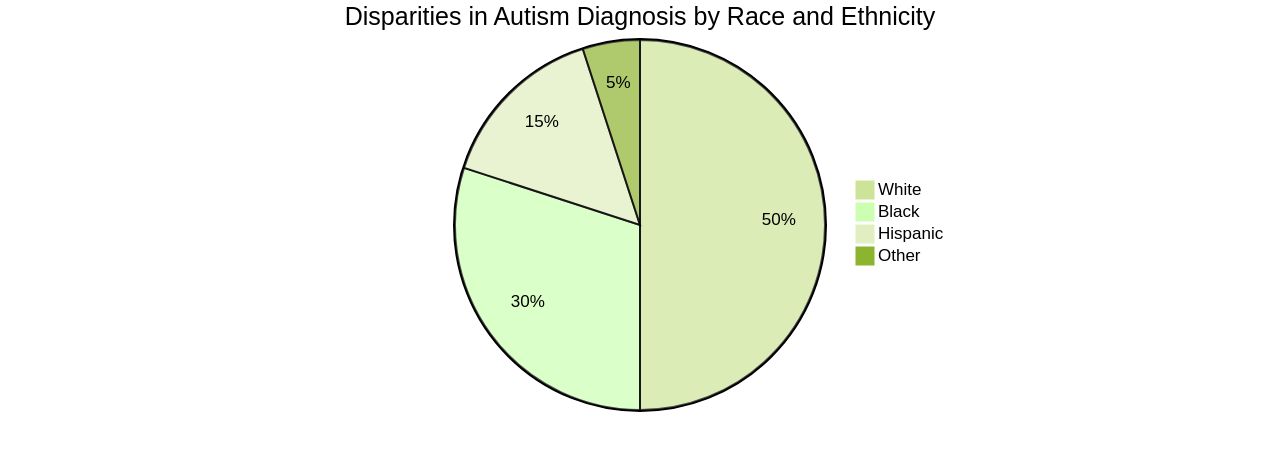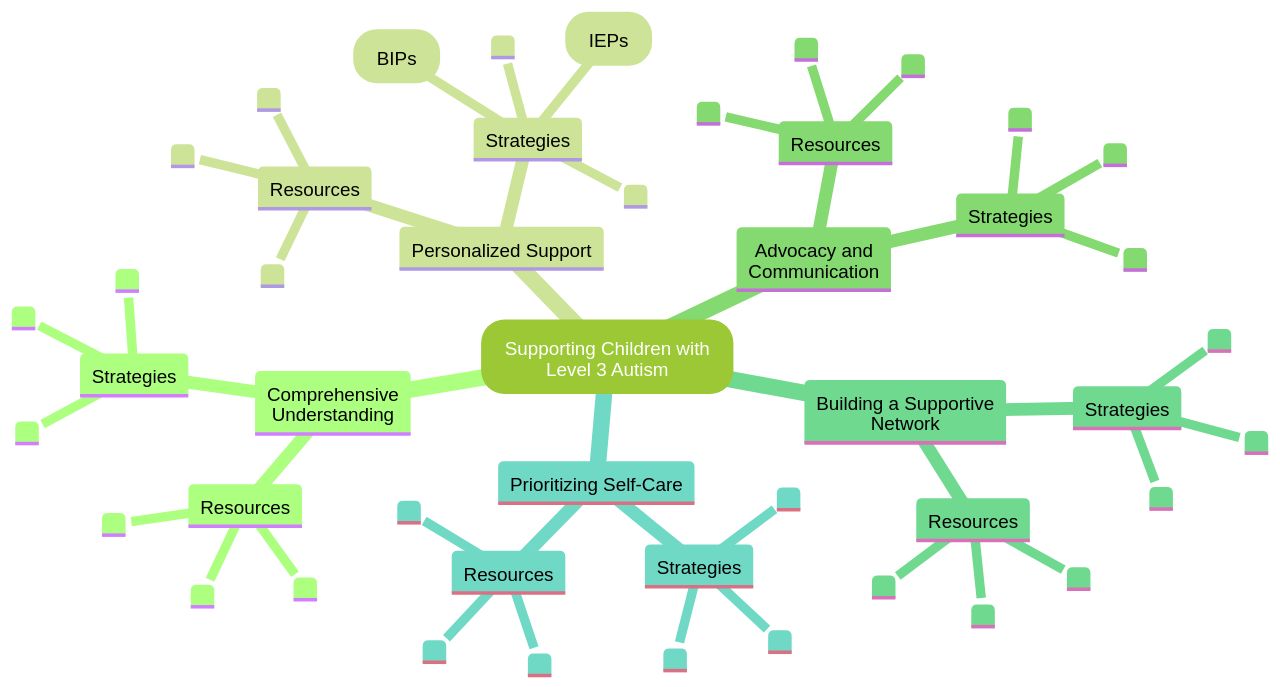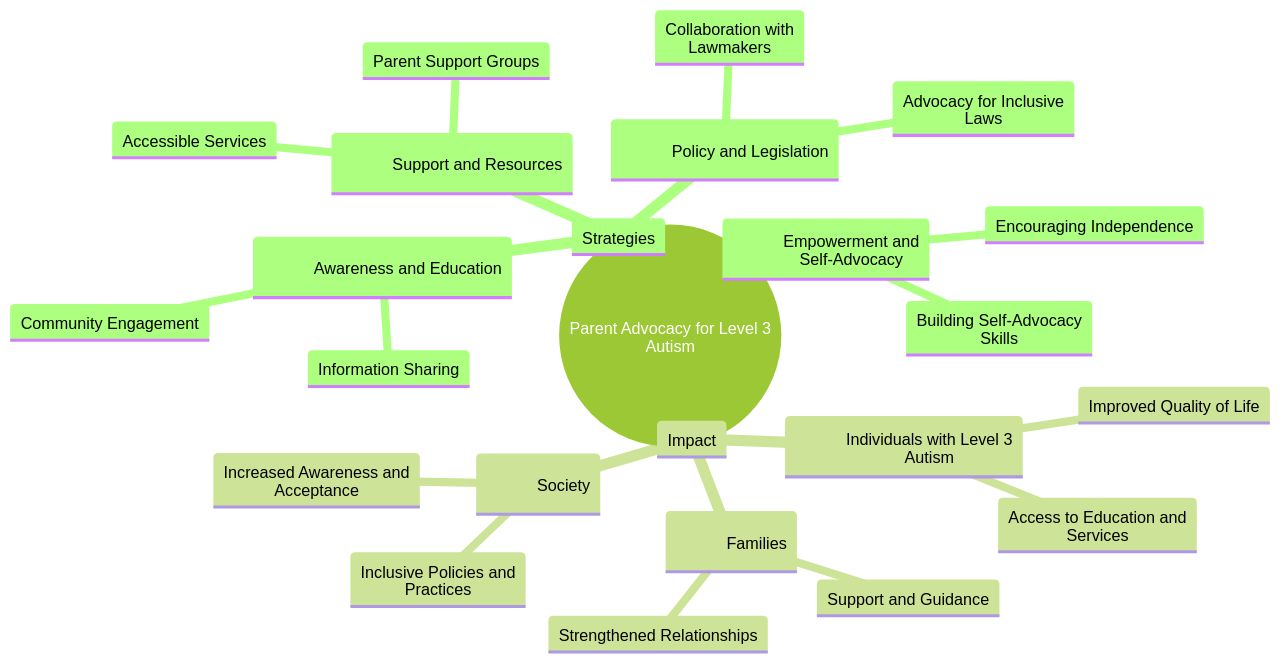Introduction
Understanding Level 3 Autism
Severe autism, also known as Level 3 Autism, is a neurodevelopmental disorder with profound impacts on social interaction, communication, and behavior. Therapies can play a significant role in fostering communication skills, enhancing social interaction, managing sensory issues, and promoting independence.
However, societal pressures may lead autistic individuals to 'mask' their autism, which can be a traumatic experience. This article explores the key characteristics of Level 3 Autism, strategies for parent advocates, accessing services and resources, and advocating for inclusion and acceptance. By following these strategies, parent advocates can make a significant impact on the lives of individuals with Level 3 Autism and their families.
Understanding Level 3 Autism
Severe autism, also known as Level 3 Autism, is a neurodevelopmental disorder with profound impacts on social interaction, communication, and behavior. Understanding this condition is fundamental for ensuring appropriate support and care. Therapies can play a significant role in fostering communication skills, enhancing social interaction, managing sensory issues, and promoting independence.
Autistic individuals often exhibit a heightened sense of justice, resilience against social pressure, and an intensified capacity for emotions like joy and wonder. Some even develop deep expertise in specific subjects. However, societal pressures may lead them to 'mask' their autism, adopting behaviors to blend in, which can be a traumatic experience.
As these children grow up, they continue to need various forms of support. While transitioning into adulthood, they face challenges similar to their peers but may have different specific issues. The current prevalence of autism in the UK is approximately 1.1:100, with males being diagnosed 3 to 5 times more than females.
Timely diagnosis, preferably by age 4, can greatly improve access to services. However, many children, especially those from marginalized communities, may receive their diagnoses later due to stigma, lack of access to healthcare services, or language barriers. The need for better access to diagnostic services and improved support systems is clear.
With minimal additional training and a willingness to learn, practitioners can better serve this population. It's crucial to remember the power of persistence in seeking help, and the existence of hope and community. Autistic individuals are not alone, and their unique strengths should be recognized and celebrated.

Key Characteristics of Level 3 Autism
Level 3 Autism, as defined by the DSM-5, manifests as severe deficits in social communication and interaction. This can present as limited or non-existent verbal language, challenges in understanding and using nonverbal cues, and struggles with reciprocal social interactions. Repetitive behaviors and restricted interests are also common characteristics.
It's important to note that the symptoms of autism typically appear by age 3, but for some children, these may not fully manifest until social demands exceed their capacity to cope. Moreover, learned coping strategies and support can sometimes mask the challenges. A rising prevalence of Autism has been observed, with the rate now at 1 in every 36 children - a stark increase from the 2004 rate of 1 in 125.
Boys are approximately 4 times more likely to be diagnosed with Autism than girls, though recent research suggests that girls may present differently, leading to potential undiagnosis. Unfortunately, there are disparities in the diagnosis of Autism. More White and Black children are identified with Autism than Hispanic children, and children of color generally receive their diagnoses later than White children.
This is often due to barriers like stigma, lack of access to healthcare services due to non-citizenship or low income, and non-English primary language. These disparities and challenges emphasize the need for increased awareness, trained professionals, and facilities to support individuals with Autism and their families. An early diagnosis, ideally by age 4, significantly increases the likelihood of receiving services, and consistent support can enhance the quality of life and independence for individuals with Autism.

Strategies for Parent Advocates
Supporting children with Level 3 Autism requires a comprehensive approach that addresses their unique needs. Parent advocates play a crucial role in this process, and here's how they can make a difference:
1.
Comprehensive Understanding: Advocates should strive to understand Level 3 Autism on a deeper level. This includes not just reading books and attending workshops, but also seeking professional guidance and staying updated with the latest research and treatments options in the field.
- Personalized Support: Since every child with autism is unique, the support provided should be individualized.
This involves a thorough assessment by a Board Certified Behavior Analyst (BCBA), followed by the setting of specific, measurable goals. A close monitoring of progress and adjusting strategies as needed is also crucial.
- Advocacy and Communication: Advocates should have strong communication skills to effectively advocate for their child's needs.
This includes understanding and navigating federal laws, such as Individual Education Plans (IEPs), and exploring alternatives to traditional public education. 4.
Building a Supportive Network: Connecting with other families dealing with Level 3 Autism can be highly beneficial. Such networks can provide emotional support, share resources, and create a sense of community. 5. Prioritizing Self-Care: Advocates need to take care of their own well-being to effectively support their child. This involves taking breaks, seeking support from loved ones, and engaging in activities that bring joy and relaxation. Remember, the journey with autism is unique for every child and family. Open communication, partnership with therapists, and shared goal-setting are vital to achieving positive outcomes.

Accessing Services and Resources
Navigating the journey of advocacy for children with Level 3 Autism is often complex and challenging. Early intervention plays a pivotal role in maximizing the developmental potential of these children.
Securing a prompt diagnosis followed by immediate access to intervention services can make a significant difference. Understanding the special education system and the rights of their children to receive appropriate educational services is another crucial aspect of this advocacy.
This knowledge enables parents to work effectively with school districts, attend Individualized Education Program (IEP) meetings, and champion the necessary accommodations and supports their child requires. Therapy services such as speech therapy, occupational therapy, and applied behavior analysis (ABA) therapy are often essential for children with Level 3 Autism.
Parents should endeavor to connect with reputable therapists and agencies that specialize in this area. Exploring community resources like support groups, recreational programs, and respite care services can provide additional support and social engagement opportunities for their child. Such resources often prove invaluable in enhancing the quality of life for these children. Finally, financial support, including government assistance programs, grants, and scholarships, can help alleviate the financial burden associated with accessing various services and therapies. Advocacy is a journey filled with challenges, but with the right resources and support, it can lead to a rewarding outcome for both the child and the parents.

Advocating for Inclusion and Acceptance
Parent advocates are pivotal in championing the cause of individuals with Level 3 Autism, striving for their inclusion and acceptance. Here's how they can further this cause:
1.
Enlightening Others: Advocates can dispel myths and misconceptions about Level 3 Autism by sharing their knowledge and experiences, thereby fostering a more inclusive and understanding society. 2.
Partnership with Educational Institutions and Communities: Advocates can collaborate with schools, community organizations, and local authorities to foster inclusive environments. This can include advocating for inclusive educational practices, accessible facilities, and community integration opportunities, as seen in the case of Dan Harris, founder of the charity Neurodiversity in Business, who secured funding for 100 picture boards to facilitate communication through images in Peterborough.
- Cultivating Self-Advocacy: Advocates can equip their child with self-advocacy skills and boost their self-confidence, which can help them express their needs and preferences and navigate social interactions.
This empowerment can be life-changing, as seen in Harris's son who used an electronic tablet to communicate, inspiring Harris to advocate for the rights of all children to a full and productive education. 4. Influencing Policy: Advocates can participate in advocacy efforts at a policy level to effect systemic changes that benefit individuals with Level 3 Autism. This could involve supporting legislation, joining advocacy groups, and participating in awareness campaigns. Given the rise in autism diagnoses, with 1 in 36 children diagnosed according to the Centers for Disease Control and Prevention, these efforts are increasingly crucial. By following these strategies, parent advocates can make a significant impact on the lives of individuals with Level 3 Autism and their families, fostering a more inclusive society.

Conclusion
In conclusion, understanding and supporting individuals with Level 3 Autism is crucial. Therapies can enhance communication skills and independence, but societal pressures to 'mask' their autism can be traumatic.
Parent advocates play a vital role in navigating these challenges. Early diagnosis and access to services are essential for positive outcomes.
Disparities in diagnosis highlight the need for increased awareness and support systems. Parent advocates should strive for a comprehensive understanding of Level 3 Autism, provide personalized support, advocate for their child's needs, build a supportive network, and prioritize self-care.
Accessing services and resources can be complex but crucial. Early intervention is key, as is understanding special education rights.
Therapy services and community resources provide additional support. Advocating for inclusion and acceptance is vital. Parent advocates can dispel myths, partner with educational institutions, cultivate self-advocacy skills in their child, and influence policy changes. By following these strategies, parent advocates can make a significant impact on the lives of individuals with Level 3 Autism and their families. Together, we can create a more inclusive society that recognizes the unique strengths of autistic individuals.




